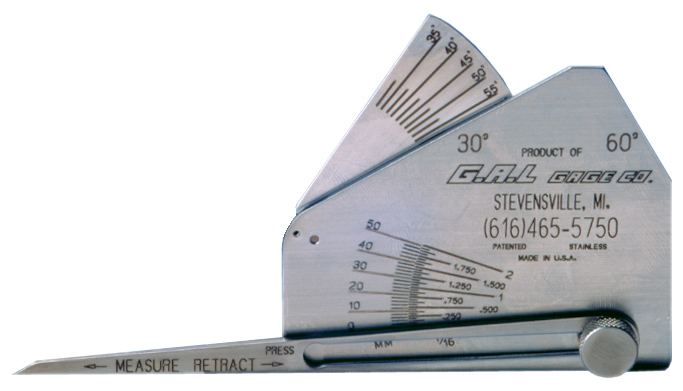Comprehending Gauge Fillet Weld: A Comprehensive Guide for Welders
Comprehending Gauge Fillet Weld: A Comprehensive Guide for Welders
Blog Article
Fillet Weld Design Methods: Maximizing Joint Efficiency and Visual Appeal for Structural Stability
In the realm of structural design and construction, the importance of fillet weld design approaches can not be overstated. By meticulously taking into consideration aspects such as weld profile optimization, product selection, joint preparation methods, welding procedure effectiveness, and aesthetic enhancement makers, engineers and approaches can accomplish an unified balance in between performance and look in their welded frameworks.
Weld Profile Optimization


Achieving an optimal weld account includes a meticulous factor to consider of variables such as material thickness, joint setup, welding position, and wanted welding rate. Furthermore, the option of proper welding specifications, such as voltage, current, and take a trip speed, is basic in managing the shape and measurements of the fillet weld. Utilizing innovative welding methods, such as pulse welding or robot welding, can additionally refine the weld account to meet details style requirements and high quality standards.
In significance, weld profile optimization is a basic aspect of fillet weld layout that directly affects the overall efficiency and integrity of welded joints in architectural applications.
Material Selection Factors To Consider
When taking into consideration material option for fillet weld layout, the compatibility of the base metals is an important aspect affecting the structural integrity of the joint. It is vital to pick products that not only bonded together successfully but likewise have comparable mechanical buildings to guarantee the lots is evenly distributed in between the base and the weld metals. Welding materials with greatly various residential or commercial properties can cause concerns such as tension concentrations, early joint failing, or cracking.
Furthermore, the atmosphere in which the bonded framework will certainly operate should be taken right into account when picking products. Factors like corrosion resistance, temperature changes, and direct exposure to chemicals can all influence the long life and efficiency of the weld joint. By choosing materials that appropriate for the intended application and atmosphere, the general toughness and integrity of the bonded joint can be significantly enhanced.
Therefore, comprehensive consideration of material compatibility and environmental elements is critical in guaranteeing the weld joint's stamina, sturdiness, and general structural stability.

Joint Preparation Strategies
Taking into consideration the important function product selection plays in making certain the architectural integrity of fillet dig this weld joints, it is vital to apply precise joint prep work techniques that enhance the connection between the base metals. Joint prep work is an essential action that straight affects the quality and toughness of the weld.
Additionally, proper fit-up of the joint is important to make certain uniform distribution of the welding material and avoid defects like insufficient infiltration or extreme build-up. Beveling the edges of the base steels can produce a groove that enables much deeper weld penetration and a more powerful bond. Furthermore, tack welding the elements in position before the final weld helps maintain placement and decreases distortion throughout the welding process. By carefully following these joint preparation strategies, welders Our site can boost the general performance and visual appeals of fillet weld joints while guaranteeing structural sturdiness.
Welding Process Performance
Effective welding processes are crucial for accomplishing optimum performance and top quality in fillet weld construction. One key element of enhancing welding procedure efficiency is picking the appropriate welding method. Elements such as product type, joint layout, and welding position have to be thoroughly taken into consideration to figure out the most appropriate method. For example, processes like gas steel arc welding (GMAW) and flux-cored arc welding (FCAW) are generally utilized for fillet welds as a result of their adaptability and rate (Gauge Fillet Weld).
Furthermore, making sure correct equipment setup and maintenance is vital for reliable welding. Regular calibration of welding machines, assessment of consumables, and maintenance of soldering iron can protect against downtime and rework, ultimately saving time and resources. Furthermore, utilizing proficient welders with experience in the specific welding procedure being made use of can dramatically impact effectiveness. Well-trained welders are a lot more skilled at changing specifications, fixing problems, and preserving constant weld high quality.
Aesthetic Improvement Methods
To enhance the high quality of fillet weld manufacture, applying aesthetic enhancement methods can play an essential function in making sure accuracy and precision throughout the welding process. Visual help such as weld dimension determines and multiplying lenses can assist in analyzing weld accounts and measurements properly. By incorporating these aesthetic pop over to this web-site enhancement techniques into the welding process, welders can achieve not just structurally audio fillet welds yet additionally aesthetically attractive results that meet industry criteria.

Conclusion
To conclude, optimizing fillet weld style entails careful factor to consider of weld profile, material option, joint prep work, welding process efficiency, and aesthetic enhancement techniques. By implementing these techniques, architectural honesty can be improved while likewise attaining aesthetic appeal. It is crucial to focus on both performance and aesthetic appeals in fillet weld layout to ensure the general high quality and durability of the joint.
By carefully thinking about variables such as weld account optimization, product selection, joint preparation techniques, welding process effectiveness, and aesthetic improvement producers, engineers and techniques can accomplish a harmonious equilibrium in between capability and appearance in their welded structures.In the realm of fillet weld layout, maximizing the weld profile plays an important duty in making sure structural integrity and performance. The weld account, which consists of the size and shape of the weld cross-section, straight impacts the circulation of stress and anxiety and load-bearing capacity within the joint. It is essential to choose products that not just bonded together efficiently but additionally have comparable mechanical buildings to make certain the tons is uniformly distributed in between the base and the weld steels - Gauge Fillet Weld.In conclusion, maximizing fillet weld style includes careful factor to consider of weld profile, material option, joint preparation, welding process performance, and visual enhancement methods
Report this page